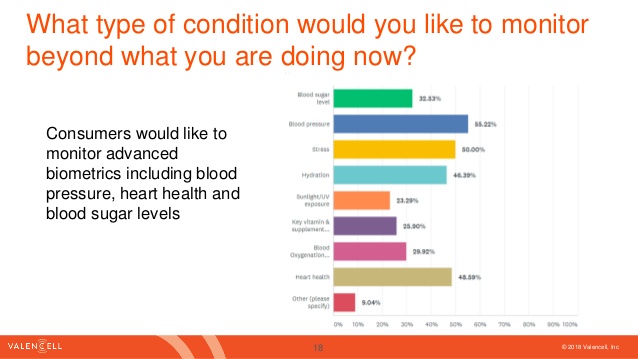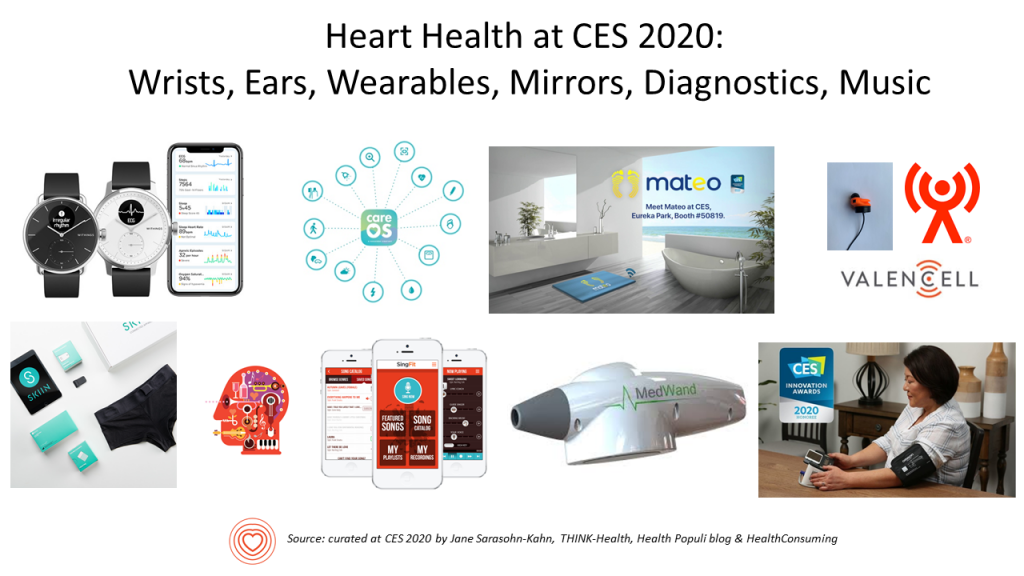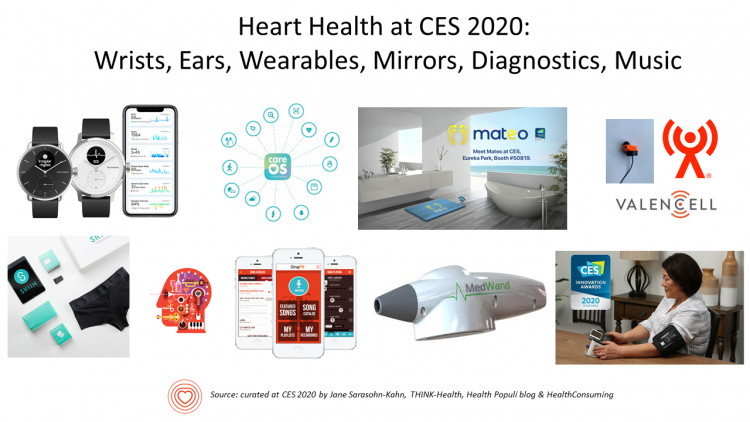 The digital health presence at CES 2020 is the fastest-growing segment of consumer technologies at the Show this year, increasing by 25% over 2019. Heart-focused technologies are a big part of that growth story.
The digital health presence at CES 2020 is the fastest-growing segment of consumer technologies at the Show this year, increasing by 25% over 2019. Heart-focused technologies are a big part of that growth story.
In fact, in our search for devices and tools underpinned with clinical proof, evidence is growing for consumer-facing technology for heart-health, demonstrated by this year’s CES. Wrist-worn devices, digital therapeutics, patient engagement platforms, pharma and health plans converged at this year’s CES, with the professional association “blessing” of the American College of Cardiology who granted a continuing medical education credit for physicians attending a one-day “disruptive innovations” conference held on Thursday this week in Las Vegas.
One key marker that heart-health has matured for clinical patient use at CES is the collaboration between CTA and the Heart Rhythm Society developing guidance for wearable health solutions, published this week.
The report identifies the categories of digital health tech featured at CES that can be utilized for personal health management, especially cardiac health, including fitness monitors (from simple tracking to mobile electrocardiogram and blood pressure checks), smartwatches, wrist sensors, ear wear (aka “hearables”), smart clothing, smart jewelry, smart contact lenses and smart tattoos.
There are many types of biometric data these devices can collect relevant to heart and metabolic function, such as steps, time of activity, calories burned, heart rate, heart rhythm, ECG, blood pressure, sleep quantity and quality, glucose level, oxygen level, body temperature, brainwaves (electroencephalogram), muscle biosignals (electromyography), cardiorespiratory function, movement patterns, sweat analysis, tissue oxygenation, emotional state and cognitive function, the report lists.
 In Valencell’s recent survey of consumer wearable preferences, 55% of people said they’d like to monitor blood pressure, up from 46% in 2016 as shown in this bar chart from the study. One in two people would like to monitor stress and heart health, and 33% would like to monitor blood glucose levels. Thus on the demand side, patients, now more activated as health care payors and consumers, are expressing demand for health monitoring beyond step-tracking.
In Valencell’s recent survey of consumer wearable preferences, 55% of people said they’d like to monitor blood pressure, up from 46% in 2016 as shown in this bar chart from the study. One in two people would like to monitor stress and heart health, and 33% would like to monitor blood glucose levels. Thus on the demand side, patients, now more activated as health care payors and consumers, are expressing demand for health monitoring beyond step-tracking.
The HRS/CTA guidelines offer pros and cons of wearable tech, providing a balanced view on the current state of efficacy, quality, and physician willingness to accept consumers’ use of digital health tools. On the “pro” side of the equation are,
- Immediate access to real-time health data
- Motivation and encouragement especially vis-a-vis patient social networks
- Accountability through tracking and monitoring, and
- Potentially enhanced physician-patient relationships, early detection, and clinical decision-making.
On the “cons” side, consider,
- Varying data accuracy and potential for false readings
- Unproven benefits
- Limited accessibility due to cost barriers or lack of internet access
- Lack of data interoperability between consumer/patient-generated data and a clinician’s EHR
- Data overload for consumers and/or clinicians, and
- Data security and privacy concerns.
 With comfortable shoes on my feet and heart health on my mind, I curated some favorite tools at CES 2020 that populate a lovely portfolio of products to help consumer and clinicians address the many facets of cardiac care — for prevention, chronic management, and stress reduction. These are shown in the chart here:
With comfortable shoes on my feet and heart health on my mind, I curated some favorite tools at CES 2020 that populate a lovely portfolio of products to help consumer and clinicians address the many facets of cardiac care — for prevention, chronic management, and stress reduction. These are shown in the chart here:
On the wrist, the Withings ScanWatch, to address AFib and heart rhythm.
On the wrist and arm, the .Omron Complete, a personal heart health coach combining the app with the HeartGuide blood pressure watch and EKG reader.
On/in the ear, the Valencell blood pressure sensor hearable.
In the mirror, the Care OS ecosystem integrating CardioComm for ECG monitoring coupled with a smart mirror.
On the floor, the Mateo bathmat that is a scale-in-a-rug that’s pretty smart.
Smart clothing (as wearable tech), covered by Myant’s connected clothing platform addressing heart health and rehabilitation (with the tagline, “Transforming Human Connectedness Through Textile Computing™”).
Diagnostics, represented by Last Gadget Standing winner for CES 2020, MedWand — “a doctor’s visit at a patient’s fingertips” — bolstering patient engagement in-between physician visits.
Finally, SingFit positions its product and services as “music-as-medicine,” and brings music therapy to CES 2020. The program is featured in the AARP Showcase of tech focused on the Longevity Economy and healthy aging. There’s a growing evidence base that music bolsters health and cognitive function, and can lower stress.
These are just some (IMHO excellent) examples of tools that consumers can use for self-care to bolster heart health at home and in the community to “make health” and conserve scarce healthcare system resources — along with potentially reducing costs for their households and for the larger health system and payors. This area of heart health is but one use case for the Internet of Healthy Things at Home, baking wellness into our homes as health hubs which I advocate in my book, HealthConsuming: From Health Consumer to Health Citizen.
Note that Cigna and Humana both had a visible presences at CES 2020. It takes a village to manage health (and especially heart health). A growing portfolio of evidence-based tools will put health into peoples’ hands, engage people in self-care, and in aggregate, build healthy cities and more productive economies.





 I'm in amazing company here with other #digitalhealth innovators, thinkers and doers. Thank you to Cristian Cortez Fernandez and Zallud for this recognition; I'm grateful.
I'm in amazing company here with other #digitalhealth innovators, thinkers and doers. Thank you to Cristian Cortez Fernandez and Zallud for this recognition; I'm grateful. Jane was named as a member of the AHIP 2024 Advisory Board, joining some valued colleagues to prepare for the challenges and opportunities facing health plans, systems, and other industry stakeholders.
Jane was named as a member of the AHIP 2024 Advisory Board, joining some valued colleagues to prepare for the challenges and opportunities facing health plans, systems, and other industry stakeholders.  Join Jane at AHIP's annual meeting in Las Vegas: I'll be speaking, moderating a panel, and providing thought leadership on health consumers and bolstering equity, empowerment, and self-care.
Join Jane at AHIP's annual meeting in Las Vegas: I'll be speaking, moderating a panel, and providing thought leadership on health consumers and bolstering equity, empowerment, and self-care.